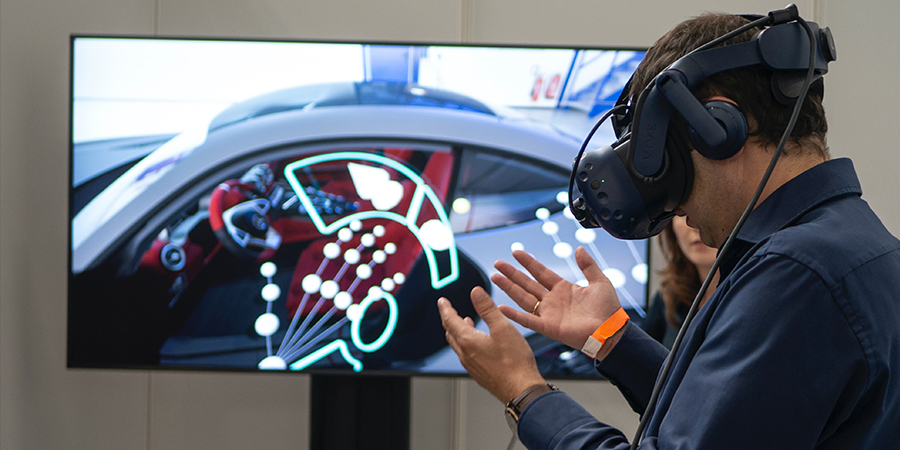Imagine playing immersive virtual games indoors where the projected objects interact with the surroundings as you navigate them through the corridors and lampstands from your hand-held devices. Or imagine the possibility of manufacturing firm employees working on digital content overlaid onto physical objects to safely operate and maintain equipment and even undertake training on physical equipment through digital training modules. Welcome to the world of spatial computing where the merging of the digital world with the physical one takes up a whole new level thanks to emerging technologies such as artificial intelligence (AI), cameras with sensors, and computer vision trackers of the environment, and IoT that provides the user interface for spatial computing.
The latest addition to the emerging technologies, spatial computing in essence is the virtualization of activities and interactions between machines, people, objects and environments in which they are used. Simply put, it extends everything that virtual-reality and augmented-reality apps can do, and then it merges these capabilities with high-fidelity spatial mapping that allows computing to monitor and control activities and the interoperability of the projected objects in the virtual as well as the physical space.
With these capabilities, spatial computing opens up synchronized operations between humans and machines as they work side by side, taking the optimization of worksites occupied by humans and machines a notch up, including coordinating the work of every machine and worker involved in the process.
Operators such as AT&T are looking at providing connectivity for augmented reality (AR), mixed reality, and spatial computing business applications over its 5G network. Some of the use cases for spatial computing encompass the following:
3D visualization of products: Collaborations on computer-aided design can save time and money by helping engineers to work with 3D-design products to test components, and iterate on the design, all without having to work with a physical engine.
Virtual shopping experience: E-commerce platforms can extend efficient virtual shopping experience by enabling customers to try out clothes and shoes or even find out if certain furniture would match with the interiors of the houses, etc through AR. The convenience of ordering products online through features could have a mass appeal for future consumers.
Hi-tech healthcare: The technology can be used for collaborative diagnostics, remote medical assessments, and training whereby medical students could perform intricate procedures in a virtual setting before they're expected to operate on a human patient. Moreover, combined with the haptics technology, spatial computing can greatly improve the performance and quality of remote surgeries.
Future of spatial computing
Without a doubt, the entertainment and gaming industry have been the pioneers in the adoption of immersive technologies, however, a variety of other sectors like healthcare, urban planning, and education, manufacturing, and education, etc are increasingly weighing their options to include the technology to diversify their offerings.
According to industry experts, the majority of supply chain organizations will invest in artificial intelligence and digital software by 2024. Robotics solutions help companies in the digital transformation across their supply chains, increasing productivity, automating processes, and improving their total operation. In the case of drones, typically they are not allowed to fly outside of the line of sight of their operator. However, in the UK, a blanket license has been granted to fly their drones beyond line of sight. These pioneering flights use autonomous system similar to self-driving cars that map the world in 3D in real time, understand the world and their position in that world to allow the pilot sitting remotely to give instructions and observe. Ambitious targets have been set to develop this technology to carry humans in the future. The level of bandwidth and capacity needed to carry out such operations is any one’s guess.
A bit close at hand, keeping up with the momentum of new 5G-enabled services, operators can add to new revenue streams by investing in technologies such as cloud gaming, virtual reality broadcasts, augmented reality navigation, mixed reality entertainment to increase their subscriber base.
Conversely, Huawei’s Cyberverse is an innovative advanced technology that integrates the virtual world with reality which connects mobile users, space, and data through spatial computing for a brand-new interaction mode and unparalleled visual experience. Cyberverse is expected to be used in public places such as tourist attractions, museums, smart campuses, airports, high-speed railway stations, and commercial buildings in the future.
According to recent market findings, the spatial computing market size is estimated to grow from $21.4 billion in 2020 to $254.1 billion by 2027, growing at a CAGR of 42.4% during the forecast year from 2021 to 2027. Key players using the technology include Microsoft, Google, Facebook, Huawei, Amazon and many others.
In the post-Covid economy where new ways of human interaction will be sought out, the capabilities of spatial computing will be key to that transformation; however, the best results will be dependent on agile and efficient networks of connectivity. Considering the competition that is gaining ground in the market today, operators and stakeholders would do well by focusing to diversify their offerings as much as possible.









